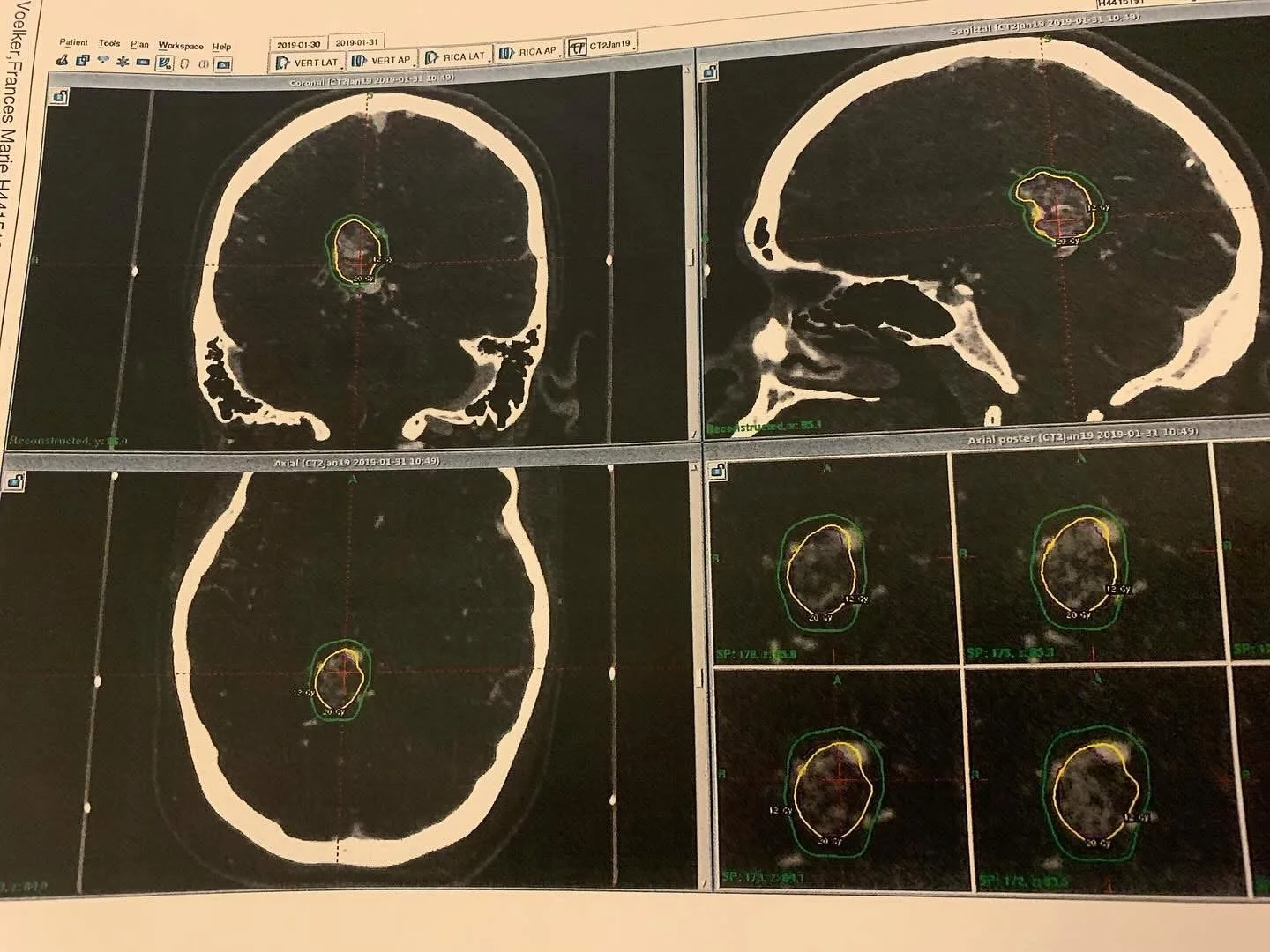My Brain Tried to Kill Me: Surviving a Cerebral AVM
MRI imaging of a cerebral arteriovenous malformation (AVM), showing a complex nidus of abnormal, tangled blood vessels in the brain. This high-grade (Spetzler-Martin Grade 5) AVM carries a significant risk of rupture, necessitating precise intervention and ongoing monitoring.
By Frankie
Disabled Air Force Veteran | Chronic Illness Advocate | Medical Nerd
Hi, I’m Frankie. I’m a 33-year-old disabled Air Force veteran, and I want to tell you about when I learned I had a cerebral arteriovenous malformation (AVM) — and how it almost killed me before I even knew it was there.
This blog is part of my effort to chronicle my medical history in an honest and empowering way — not just for me, but for anyone living with a complex or rare condition. This is my AVM story, and it starts with a whisper in my ear.
What Is a Cerebral AVM?
A cerebral arteriovenous malformation (AVM) is a rare and potentially life-threatening condition where blood vessels in the brain form an abnormal connection between arteries and veins, bypassing capillaries. This creates a tangle of fragile vessels prone to rupture.
Occurs in about 0.05% of the population
Can lead to hemorrhagic stroke if ruptured
Often goes undetected until it bleeds
In my case, I was lucky. My AVM was found before it ruptured — but only because I trusted my instincts and had a provider who listened.
Early Symptoms: When Something Feels Off
In 2018, I started noticing subtle but unusual symptoms:
Pulsatile tinnitus in my right ear (a whooshing sound in rhythm with my heartbeat)
Dizziness and episodes of vertigo
A strange sense that something neurologically wasn’t quite right
These symptoms weren’t severe enough to stop me from functioning, but they persisted — and I couldn’t ignore them.
As a trained Air Force medic, I’d developed a habit of digging deeper into symptoms. I started researching differentials, and one condition kept resurfacing: cerebral AVM. It felt unlikely, but my gut told me not to brush it off.
The MRI That Changed My Life
I confided in a physician I respected deeply — a mentor and colleague. I told him about the symptoms and the concerns I had based on my research.
Instead of dismissing me, he listened.
He ordered an MRI.
I went on a family trip to Hawaii shortly after the scan. When I returned, I hadn’t heard anything, so I checked the results myself at work (as I was authorized to do).
And there it was:
“Cerebral arteriovenous malformation.”
I felt the ground shift beneath me.
A Life-Threatening Diagnosis: Grade 5 AVM
Further evaluation revealed the full picture:
Spetzler-Martin Grade 5 AVM (the highest severity level)
Located in the posterior corpus callosum, deep within the brain
Considered inoperable at the time due to size and location
Here’s the part that really drove it home:
The AVM carried an estimated 3% risk of rupture per year, compounded annually since birth — which translated to a 78% lifetime risk of rupture by the time I was diagnosed.
This wasn’t just serious — it was potentially fatal. But I had options.
My team recommended a non-invasive approach first:
Gamma Knife radiation.
Gamma Knife Radiation: Hope and Risk
In January 2019, I underwent Gamma Knife radiosurgery — a focused radiation treatment designed to gradually shrink the AVM and reduce the risk of rupture.
The procedure itself went well, but soon after, I experienced complications that taught me just how fragile the balance was in my body. Despite the challenges, Gamma Knife was the safest option to treat something inoperable — at least initially.
Why Sharing My Story Matters
Living with a cerebral AVM is a constant reminder of the fragility of life and the power of persistence. Early symptoms can be subtle, and the diagnosis can come as a shock — but timely detection and treatment can save lives.
And if you’re dealing with an AVM, know that you’re not alone. Medical advances and supportive care can make a difference.
Thank you for reading my story. If you found this helpful, please share to raise awareness about cerebral AVMs and the importance of listening to your body.
—
Stay resilient,
Frankie
